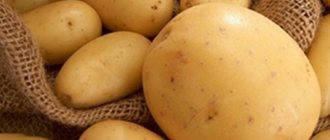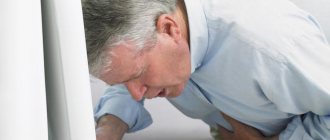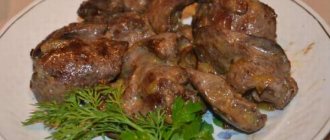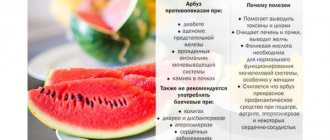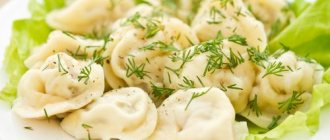Feces with pancreatitis take on a mushy form. During defecation, stool is not completely expelled. Their composition contains traces of fat, muscle fibers, connective tissue and starchy grains, which indicates an insufficiency of enzymes for normal digestion. Undigested fats in the stool cause frequent stools, mainly liquid and foamy feces. The urge to defecate reaches up to 4 times per day.
A healthy person experiences a feeling of relief during bowel movements, without pain or discomfort. No more than 400 g of feces should be released per day. The amount may increase as a result of consuming products of plant origin. If fatty foods predominate in the diet, the amount of feces, on the contrary, decreases. The normal consistency of feces is considered to be light, allowing a smooth sinking to the bottom in the water.
If pancreatic function is impaired, stool changes color. These kinds of changes are the determining factors for diagnosing the degree of development of the pathology.
What is the consistency of stool with pancreatitis?
The consistency of stool is considered normal if it is not hard. With inflammation of the pancreas or constipation, the consistency of the stool can be dense or ointment-like. If there are problems with digestion, loose stools appear, increased intestinal motility provokes a mushy state, and as a result of fermentation, feces appear in the form of a foamy mass.
Under normal conditions, feces are passed continuously and the feces are odorless. Acidity should range from 6.8 to 7.6 pH.
Is green really safe?
In the absence of any changes in the diet of a person suffering from inflammation of the pancreas, the stool should always be the same. If the stool suddenly turns green, this clearly indicates the presence of bile in it. In such cases, you should immediately inform your doctor, who will prescribe a therapeutic diet. In addition, the following measures should be taken:
- exclude fatty, fried, smoked, any types of canned food, sweets;
- completely avoid alcohol, coffee and carbonated drinks.
Characteristics and reasons
Signs of inflammation of the pancreas are pain in the hypochondrium an hour after eating fatty, fried, salty, spicy foods. The main symptom is accompanied by additional symptoms, such as fermentation of intestinal contents and accumulation of gases. The patient exhibits signs of intoxication, bloating and diarrhea. The disease requires competent and timely treatment; neglect of the pathology is fraught with irreversible consequences, even death. Before prescribing treatment, studies are required to help determine the substance, color, and consistency of stool.
Fecal masses with pancreatitis become mushy and have a liquid consistency. The substance of feces is:
- Ribbon-shaped, indicating a pathological condition of the sigmoid colon. This condition of the stool may indicate the occurrence of a tumor or the presence of sphincter spasm;
- In the form of sheep feces, resembling dark colored balls. This consistency of stool is observed in chronic constipation, as well as in peptic ulcers;
- Cylindrical in shape, indicating that a normal amount of food of plant and animal origin was consumed;
- Shapeless discharge occurs in people who eat vegetarian food, which is due to the large amount of plant fiber in it.
A substance is considered normal if the ratio of dense fractions is about 20%, water - 80%. Normal stool regularity can be up to two times a day, but at least once every 2 days.
In a healthy person, the act of defecation should take place without pain or discomfort, and relief should appear after the procedure.
All changes occur as a result of pathological conditions in the body. Feces change in consistency due to a failure in the production of digestive enzymes, which leads to indigestion. When partial rotting or fermentation of the food taken is added to the condition, feces become foul-smelling.
How do stools change?
Stool with pancreatitis directly depends on the stage of development of pancreatitis, as well as adjacent pathologies. During an exacerbation of the pathology, the patient’s stool is dirty gray, pearlescent in color. Brown gamma stool indicates changes in diet, yellow substance is observed in childhood when children are breastfed.
However, during the course of treatment, yellow stool is also observed due to the use of antibacterial drugs. The feces themselves are similar in structure to soft plasticine. Such changes will cause the development of other pathologies.
When digestion is disrupted, stool becomes diluted. Due to intense interstitialization, feces acquire a mushy consistency, and fermentation leads to a foamy texture of feces.
Pancreatitis is considered a disease that affects the color and texture of stool.
The feces may become lighter in color, which is a warning sign that bile is accumulating in the gland. The feces become viscous, are not completely washed off and have an unpleasant odor.
When acute pancreatitis becomes chronic, a person develops loose stool.
digestive problems
Character of stool in chronic pancreatitis.
- Ribbon-shaped appearance - indicates a painful phenomenon in the sigmoid colon. This feature of feces indicates the appearance of a tumor formation or the presence of sphincter spasms.
- The shape of sheep stools resembles dark colored balls. Such stool is observed when a chronic form of constipation or ulcerative pathologies develops.
- The shape of the sausage shows that the person has consumed foods of plant and animal origin in normal quantities.
- Shapeless feces - appears in people who eat a vegetarian diet, which indicates the consumption of foods containing a large amount of plant fiber.
Feces for pancreatitis in adults
You can suspect the development of pancreatitis if the feces become viscous and begin to stick to the walls of the toilet, smelling foul and putrid. The patient feels bloating, colic, belching, heartburn, nausea, vomiting, and accumulation of gases in the intestines.
Fecal masses with pancreatitis in adults can be of different shades, which is associated with the degree of damage to the pancreas and a violation of its enzymatic activity. The color of urine with pancreatitis becomes dark (the color of beer) as a result of the presence of amylase.
Fecal masses with pancreatitis acquire a marbled tint, the consistency of feces can be different. In chronic pancreatitis, food particles are fixed in the stool, and a foul odor appears during the act of bowel movement.
In a complicated form of the disease, the stool becomes olive or green in color, especially if there are problems with the secretion of bile and there is congestion in the gallbladder. Olive color of stool may indicate a deficiency of both bile and other digestive secretions. During the period of exacerbation of pancreatitis, feces become pearly and acquire a gray-dirty hue.
Visualization of changes in stool allows one to specifically determine the stage and course of the inflammatory process of the pancreas, which is especially important when diagnosing.
Feces with a similar pathology
When studying the analysis, three components are taken as the basis: stool consistency, color and substance. With such a disease, feces, as a rule, have a liquid, mushy consistency; the output portions are small, often with poorly processed fats and fibers. This suggests that there is a lack of enzymes to completely digest food. It is unprocessed fats that lead to liquid and quite frequent, more than 3 times a day, stools with pancreatitis, as well as pain under the left rib.
The color of stool in pancreatitis is pearly or gray-dirty, especially during exacerbations of the disease.
The substance may be as follows:
- ribbon-shaped, which may indicate the development of a tumor or the presence of sphincter spasms;
- cylindrical - this happens with a normal dosage of plant and animal food in the intestines;
- shapeless - if you eat a lot of fiber or vegetarian food;
- in the form of dark-colored sheep balls - this happens with constipation, if the patient has an ulcer.
The substance must consist of dense fractions and water. Normally, bowel movements should be regular - up to two times a day, but at least once every two days.
After a person visits the toilet, he should feel good and pleasant. There should be no pain during bowel movements or discomfort afterwards. The norm of stool for pancreatitis is of interest to those who are faced with such a pathology.
- The daily norm is considered to be 150-400 g. If you eat plant foods, the amount of stool may increase, and if it is fatty, it may decrease.
- Normally, stool is light and gently sinks to the bottom in the water.
- With a mixed diet it is brown in color. Breastfed babies have yellow and golden stools.
- During an acute attack, the color of the stool will be olive, closer to a grass color. The acute phase is always accompanied by other unpleasant symptoms such as nausea and vomiting.
- If stool is green during pancreatitis, this is a sign of severe inflammation in the pancreas. The change in color occurs due to the fact that the required volume of bile and other digestive enzymes does not enter the intestinal lumen. If there is a high fat content in the stool, the shade will change in any case.
- If the color is black, one can judge serious disorders in the body. Most often this indicates the presence of blood in the stool. Internal bleeding is possible.
- The consistency of the stool should be soft. If there are diseases of the pancreas and constipation, it becomes dense and ointment-like.
- If digestion in the intestines is impaired, the stool is loose.
- If peristalsis is increased, it is mushy.
- When there is strong fermentation, the stool will be foamy.
- The normal shape of stool is sausage-shaped, cylindrical. The discharge is usually continuous.
- The smell normally should not be too strong; after drinking milk it may be sour.
- Stool acidity is normal - 6.8-7.6 pH.
Pancreatitis (ICD code 10 K86) is promoted by digestive disorders. This necessarily leads to changes in feces and deviation from the norm. As already noted, during diagnosis, undigested particles of food and fat can be found in the stool. The stool may turn white if bile has accumulated in the pancreas.
Fecal abnormalities with pancreatitis can be recognized independently. It sticks to the walls of the toilet, has a viscous consistency, does not sink in water, is difficult to wash off, and has a foul, putrid odor. To normalize stool, a special diet and medications (probiotics) are prescribed along with the main treatment.
In adult patients with pancreatic necrosis, calculous pancreatitis and other complications, all the symptoms of poisoning are present. Patients suffer from nausea, repeated vomiting, constant heartburn, and abdominal cramps.
In case of constant errors in nutrition, problems arise with the passage of feces due to pancreatitis. During fermentation in the intestines, the absorption of nutrients is blocked, which is why the patient does not receive enough vitamins and minerals. This leads to exhaustion of the body and loss of body weight.
Feces with pancreatitis in children
With chronic pancreatitis in children, stools in most cases are frequent and liquid. With reactive pancreatitis, diarrhea is observed, followed by constipation. With diarrhea, loose stools are covered with a greasy film.
In breastfed babies, the normal color of stool is yellow. When the inflammatory process of the pancreas develops, the stool becomes light in color with a gray tint, sometimes white. In the photo you can clearly see the difference between a child’s healthy feces and feces after inflammation of the gland.
Feces for pancreatitis and cholecystitis
Cholecystitis and pancreatitis are inflammatory processes that occur together. The disease is almost always accompanied by fecal stagnation. The condition is explained by the fact that as a result of pathological changes in the gallbladder, which is responsible for supplying the gastrointestinal tract with the necessary amount of bile, the process of supply of the substance involved in digestion is disrupted. Problems arise in digesting heavy and fatty foods. The bolus of food lingers in the stomach for a long time and then enters the intestines in undigested form. As a result, the patient has difficulties with defecation, which are aggravated by intoxication caused by rotting food.
Fecal masses with cholecystitis and pancreatitis are dense, contain elements of uncooked food, fibers of tissue structures, defecation is accompanied by ruptures of the anus. The patient is worried about an excessive amount of gas in the intestines, headaches, heartburn, nausea, loss of appetite, and bitterness in the mouth.
Color
If a patient has colorless stool due to pancreatitis, before prescribing treatment, attention must be paid to his nutrition. The cause of colorless feces may be the predominance of fermented milk products in the diet, in particular sour cream, cream, fatty cottage cheese, which can lead to stool abnormalities in a healthy person.
The green color of stool in pancreatitis indicates the presence of a chronic form of the disease caused by exocrine insufficiency, aggravated by stagnation of bile or a failure of the process of its release into the stomach. Olive-colored feces with pancreatitis indicate an insufficient level of bile and accompanying secretions in the intestinal lumen.
Stool may acquire unusual shades that differ from normal as a result of taking antibiotics and iron supplements, as well as after consuming activated carbon.
Feces may have abnormal shades (black color) due to the use of food products containing coloring fat-soluble components. These foods include beets, liver, blood sausages, tomatoes and black currants.
The appearance of such a shade of feces may also indicate the presence of quite serious pathologies, such as varicose veins in the esophagus or peptic ulcers. That is why, when black stool appears, you need to contact a specialist and undergo a copogram to find out the true reason for the deviation of the color of feces from the norm.
The color of stool during pancreatitis may vary depending on the severity of the disease:
- With exacerbation of pancreatitis, feces acquire a dirty gray or pearlescent tint;
- The green color of stool is recorded in the chronic form of pancreatitis;
- Feces may take on a very light shade, approximately whitish in color, as a result of the accumulation of a large amount of bile in the gland.
Color of feces with pancreatitis
Pancreatitis is a disease that leads to a change in the natural functioning of digestion. A lack of enzymes contributes to a negative effect on all organs, and the color of the excrement will allow you to determine the real violations.
indigestion
After eating foods prohibited for consumption, the patient experiences indigestion, which is accompanied by a condition where a process of decay and fermentation develops. Fatty meats, fish, lard and other products lead to negative consequences, changing the color of stool in the pathology of pancreatitis.
Green stool with pancreatitis indicates an exacerbation of changes in exocrine function. This situation is characteristic of the chronic type. In addition, green stool will occur when stagnation of bile develops and the release of the substance into the stomach increases.
As a result of the abuse of fatty foods and alcohol, a painful phenomenon develops in the pancreas, and the stool becomes light-colored.
If, in addition, signs of painful discomfort and stool disorder are formed, then light-colored feces clearly indicate pancreatitis. Light color appears when taking medications or due to infectious manifestations.
If a patient has pancreatitis, doctors advise carefully monitoring the color of feces. A dangerous sign of pancreatic disease is black feces. It signals the formation of serious diseases. This often indicates the presence of internal bleeding. It happens that the cause of blackness is in taking certain medications - activated carbon. Dangerous impurities are observed in the stool, which is a reason to consult a doctor.
It is normal for there to be a small amount of mucus as it is necessary for the stool to move easily. When pancreatitis forms, the volume of mucus can increase. When obvious marks remain on the toilet, this is a reason to think about it.
Mucus in feces occurs when enzymes are too active. When a painful phenomenon occurs, the gastrointestinal tract attempts to stop it thanks to mucus, as a result of which it is excreted from the intestines along with excrement. This cleanses the body of toxins and prevents the organ from becoming inflamed. A large volume of mucus also indicates other diseases, which are taken into account.
weakness
The presence of blood in feces during pancreatitis is considered the most negative cause, which is characterized by the following situations:
- the presence of formations in the digestive tract;
- wounds and ruptures in the walls of the large intestine appear;
- the presence of inflammatory phenomena that have progressed to the acute stage;
- There are areas that bleed.
Due to the severity of the symptom, doctors, using laboratory stool analysis and blood tests during the development of pancreatitis, identify the true factor in the appearance of bloody bowel movements for subsequent therapy.
If a patient develops the following symptoms, doctors advise immediately going to the hospital.
- Symptoms of itching and burning, blood in excrement.
- Nausea.
- Weakness.
- Painful sensations during bowel movements.
- Rapid drop in pressure.
- Feces come out in large volumes.
- Temperature increases.
hospital treatment
Until the cause of blood in the stool is determined, you should not eat foods that are difficult to digest. It is forbidden to include fatty, spicy, smoked foods in the diet for pancreatitis.
Type and features
In case of pancreatitis, examining stool and observing its shape, color, and consistency allows you to more accurately determine the course of the disease and prescribe the correct treatment. The digestion process as a result of inflammation of the pancreas and disruption of the enzymatic function of the organ is manifested by increased gas formation, bloating, and stomach pain. The frequency of bowel movements, shape and color of stool vary depending on the severity of the disease.
Determination of the type of stool in pancreatitis is often carried out using the Bristol scale of stool forms. The following types are distinguished:
- Feces are separate hard lumps, nut-shaped (difficult to pass);
- Sausage-shaped feces with cracks on the surface;
- Feces are sausage- or snake-shaped, with a smooth surface and soft consistency;
- Feces are soft lumps with straight ends (easily passable);
- The feces have the structure of loose flakes with uneven ends, the stool is mushy;
- The masses released during emptying have a liquid consistency and do not include solid particles. Feces are completely liquid.
When pancreatitis is recorded:
- Feces containing mucus. The presence of a small amount of mucus is not considered a deviation from the norm. Mucus is necessary for the transport of feces. With pancreatitis, the increase in the amount of mucus can be of different percentages. If abundant traces of mucus are recorded on the walls of the toilet, this is an alarming signal about the progression of the disease.
The appearance of mucus in the stool indicates increased enzymatic activity. Excessive mucus secretion appears as a result of pathological conditions in which the organs of the digestive tract try to neutralize the substance that negatively affects their condition with an excessive amount of mucus, through liquefaction and evacuation together with feces. In this way, the body gets rid of processing residues during the digestion process to prevent the development of inflammation in the organs.
Excessive mucus in the stool can be a harbinger of other pathologies. A diagnosis can be made after a thorough examination by a specialist.
- Traces of blood in the stool. Traces of blood in the feces during pancreatitis appear in the presence of neoplasms in the organs of the digestive tract, as well as as a result of the appearance of cracks and tears in the walls of the colon. Blood in the stool may be a sign of bleeding areas in the digestive system, as well as an exacerbation of acute pancreatitis.
To determine the cause of the appearance of blood in feces, laboratory and instrumental examinations are carried out, which makes it possible to clarify the density of blood clots, the color of the substance, and the presence of other symptoms. Until the cause is determined, the doctor recommends not using coarse and difficult-to-digest foods in the diet. Consumption of fatty, spicy, salty, sour, smoked foods and fast foods is prohibited.
The peculiarity of the excretion of feces with traces of blood are the symptoms that accompany the disease:
- General weakness;
- Nausea;
- A sharp decrease in blood pressure;
- Pain during bowel movement;
- Pronounced intensity of discharge.
Features of stool with pancreatitis
Pancreatitis is one of those diseases that may not manifest itself for a long time, thereby complicating the process of subsequent treatment. However, there are a number of signs by which an attentive person can detect certain changes in his body and respond to them in time. One of these signs is stool.
Feces with pancreatitis change quite a lot, so it is important to pay attention to this and consult a doctor, even if there is nothing else to worry about.
If you doubt whether the appearance of feces is normal, you can always find a photo on the Internet and compare.
If the pancreas malfunctions, the stool becomes liquefied, does not come out immediately, but in small parts, and contains undigested food particles, which indicates a lack of enzymes.
There are quite a lot of options for the shape and consistency of stool with pancreatitis, but we can highlight those that are most common:
- Thin and long, resembling a ribbon. This option indicates problems with the sigmoid colon and tumor processes.
- The so-called "sheep's balls", indicating the presence of constipation and ulcers.
- Unshaped chair.
Healthy human feces
Whatever lifestyle a person leads, in medicine there are standards regarding his waste products:
- ratio of dense particles and water 20/80%;
- stool frequency at least once every two days;
- bowel movements should occur easily, without causing discomfort;
- the average stool volume of a healthy person is 150–400 grams per day;
- the feces should be cylindrical in shape and light, contrary to the popular joke that the feces of a healthy person sink, slowly sinking to the bottom.
A healthy lifestyle is the key to good health. Active people who play sports rarely experience bowel problems
Changes in stool depending on the form of pancreatitis
Stool with pancreatitis directly depends on the stage of the disease and concomitant diseases. The most obvious violations occur during the period of exacerbation, the feces acquire a gray color with a pearlescent tint. This disease is complicated by constipation, indicating an inflammatory process in the digestive tract.
After the transition of acute pancreatitis to chronic pancreatitis, diarrhea overtakes a person. Loose stools can be explained by several reasons:
- in the case of pancreatitis of alcoholic origin, the digestive tract, weakened by toxins, cannot cope with its functions;
- Disturbance of microflora entails the appearance of dysbacteriosis;
- there is an acute shortage of enzymes necessary for complete digestion of food;
- intestinal motility is disrupted.
Features of diarrhea with pancreatitis
Digestive dysfunction is the main symptom of diseases associated with inflammation of the pancreas.
The stool takes on a mushy consistency, and the urge to have a bowel movement appears after every meal.
There are a number of features of stool with pancreatitis:
- During antibacterial therapy, stool becomes yellow and resembles plasticine in consistency.
- With pancreatitis, the color of stool changes to gray or very light, and undigested fats add shine to it;
- Feces have a foul odor and become very viscous (it is difficult to wash off clothes and is difficult to wash off surfaces).
Lack of medical care or untimely initiation of treatment can lead to very unpleasant consequences, the basis of which is dehydration:
- weight loss;
- inflammation of the mucous membranes;
- anemia;
- acute lack of vitamins and minerals;
- insomnia;
- apathy against the background of permanent neurosis.
One of the most alarming symptoms of pancreatitis is black diarrhea. Any doctor, hearing such a complaint, will be seriously concerned about the patient’s condition, since this indirectly indicates internal bleeding. It is blood that can color stool black.
Sometimes black stool is the result of eating foods that contain dye. Activated carbon has the same effect.
Presence of mucus
Another dangerous symptom is the presence of mucus. This usually indicates increased production of digestive enzymes, associated with the body’s desire to get rid of harmful substances along with feces as quickly as possible.
Is green really safe?
In the absence of any changes in the diet of a person suffering from inflammation of the pancreas, the stool should always be the same. If the stool suddenly turns green, this clearly indicates the presence of bile in it. In such cases, you should immediately inform your doctor, who will prescribe a therapeutic diet. In addition, the following measures should be taken:
- exclude fatty, fried, smoked, any types of canned food, sweets;
- completely avoid alcohol, coffee and carbonated drinks.
The presence of traces of bile in the stool may indicate excessive production of enzymes or their stagnation. Only a doctor can definitely dispel doubts
In addition to diet, it is necessary to use medications that can only be prescribed by a specialist, based on test results.
Blood in stool
The most dangerous symptom of pancreatitis, causing anxiety among doctors and fear among patients, is the presence of fresh blood in the stool. There may be several reasons for its appearance:
- tumor processes in the gastrointestinal tract;
- cracks and ruptures of the colon;
- acute inflammatory processes.
At the first detection of blood during a bowel movement, you should immediately consult a doctor, as this may indicate acute pancreatitis.
For diagnosis, the smallest details are very important: the thickness of the clots, their color, the presence of other symptoms
There are symptoms that, in the presence of bloody stool, should prompt you to immediately go to a medical facility:
- painful bowel movements;
- nausea, vomiting, dizziness;
- significant decrease in blood pressure;
- temperature increase.
Diagnosis of pancreatitis
One of the very first and most reliable tests prescribed for the diagnosis of pancreatitis is a coprogram.
At the initial stages, in laboratory conditions, they find out whether there are traces of undigested food in the stool, the presence of which indicates a lack of enzymes
There are rules for collecting material for analysis, because only if the necessary techniques are followed will the result be reliable. Basic recommendations:
Blood counts for pancreatitis
- before collection, try to avoid taking medications as much as possible;
- follow a therapeutic diet;
- collect feces in a sterile container;
- the material must be fresh (overnight storage in the refrigerator is possible);
- women undergoing analysis during menstruation must use a tampon, having previously carried out hygienic procedures.
A stool test for pancreatic elastase is a reliable way to determine whether inflammation of the pancreas is occurring and to what extent.
The fact is that elastase is an enzyme produced by the gland, which, passing all the way through the gastrointestinal tract, does not change either qualitatively or quantitatively. The accuracy of this analysis is 93%.
A low level of elastase indicates the development of pancreatitis, and can also be detected in diabetes mellitus.
For a chronic disease, it is recommended to retake this test annually to monitor changes.
Treatment of pancreatic diarrhea
Diarrhea, no matter what disease it is caused by, requires an immediate response, because it instantly leads to dehydration of the body and causes serious complications. For pancreatitis, a comprehensive approach is taken to solving this problem:
- prescribe medications;
- recommend strict adherence to a therapeutic diet;
- The use of traditional methods is allowed (with prior consultation with a specialist).
Medications
The treatment strategy for diarrhea always depends on the form of pancreatitis and the presence of concomitant diseases. Traditionally there are 2 ways:
- Oral. It consists of prescribing enzyme-containing drugs that facilitate the functioning of the pancreas (Creon, Pancreatin, Bifidumbacterin, etc.).
- Intravenous. Used in acute periods when immediate response is required. It is carried out in a hospital. Solutions of electrolyte salts are prescribed (Disol, Trisol, etc.)
When taking any medications, you should always strictly follow the instructions and prescription of the doctor.
Folk remedies
If the situation is not critical, and the doctor has approved the proposed method of treatment, you can try folk remedies. Traditionally, they consist of consuming decoctions of medicinal herbs.
A decoction of corn silks and other medicinal plants:
- take equal parts of corn silk, chamomile and calendula inflorescences;
- pour boiling water at the rate of 1 tbsp. herbal mixture per 1 glass of water;
- leave for 1 hour;
- consume half an hour before meals.
Mint decoction:
- take mint, elecampane and string in equal parts;
- pour boiling water at the rate of 3 tbsp. spoons of prepared herbal mixture per 0.5 liters of water;
- Seal tightly and leave for at least 1 hour.
Abnormal bowel movements during pancreatitis are common, but it is important to respond to it in time and consult a specialist. With timely treatment, you can get rid of this unpleasant symptom. In diseases associated with digestive dysfunction, one of the most important conditions for positive dynamics is the patient’s attentive attitude to changes in his body.
Source: https://schsite.ru/diagnostika/osobennosti-stula-pankreatite
Diagnosis of pancreatitis by stool
The color, shape, smell and pathology-specific consistency of stool very often become the first signs that indicate the presence of an inflammatory process in the pancreas. If pancreatitis is suspected, a number of laboratory and instrumental studies are prescribed. To clarify the diagnosis, special attention is paid to stool examination. Modern medicine conducts a special study for this purpose - a copogram.
This type of examination makes it possible to determine the safety of the full digestive function of various organs, including the pancreas.
Laboratory stool analysis
To ensure clear analysis results and its informativeness, it is necessary to organize the collection of feces correctly, in accordance with existing requirements. For analysis, it is necessary to collect the amount of feces that is excreted during one bowel movement. Feces should be placed in a dry and clean glass container; you can also use plastic or waxed containers. Before collecting stool, it is advisable that the patient adhere to his usual diet. It is important for women to prevent blood from getting into the test material if she is experiencing monthly bleeding at the time of taking the test.
During the coprogram, the external and microscopic characteristics of the stool are assessed. The color, quantity, shape, smell, presence of pathological impurities and foreign elements in the feces are recorded.
Microscopic examination reveals uncooked food debris and particles of intestinal mucosa. Unchanged muscle fibers, incompletely digested and assimilated plant fiber, and connective tissue are detected.
In order to detect starch grains, both internal and intracellular, the remains of carbohydrate products are stained with Lugol's solution. To assess the absorption of fats from food taken, feces are stained with a special dye - Sudan iii. The method allows you to determine the amount of neutral fat and fatty acids.
Using a copogram, accelerated evacuation from the stomach and intestines, chronic diseases of the gastrointestinal tract, especially colitis of all types, are determined. The study allows you to detect violations:
- Enzymatic function of the pancreas and intestines;
- Enzymatic and acid-forming functions of the stomach;
- Liver functions.
Home stool test for pancreatitis
Pancreatitis is a disease that recurs in most cases. Doctors advise constantly monitoring the condition, shape, and color of stool, since a change in one of the indicators may be a signal of an exacerbation of the disease.
It is necessary to pay attention to the color of stool. Normally, a healthy person's feces should be light brown. The shape of stool in the form of cylindrical fragments indicates that a balanced diet rich in proteins was taken, and the food taken was completely digested.
Changes in the color or shape of feces, the appearance of a foul odor, traces of mucus or blood in the excreted feces indicate a relapse or development of the disease. Changes in stool parameters are gradually accompanied by other symptoms, such as fever, abdominal pain, nausea and vomiting. In such situations, medical attention is urgently required; delay can lead to serious complications.
Normalization of stool with diet
Pathological processes in the pancreas can be stopped and treated only after adjusting the diet. It is necessary to exclude from the menu all products that can cause dyspeptic disorder. It is useful to consume products containing fibers of natural origin: bran, cereals, dried fruits.
Basically, exacerbation of pancreatitis, accompanied by a change in the color of stool, occurs due to a violation of the diet, in particular when eating food containing large amounts of starch, proteins (meat and eggs), as well as fried, fatty, smoked foods, and baked goods.
To normalize the structures of feces and stop the pathological process, it is necessary to follow a strict diet. The diet should include:
- Lean meats;
- Dairy products;
- Crackers made from whole grain flour;
- Vegetables fruits;
- Cereals;
- Homemade jelly, without dyes and sugar;
- Galette cookies.
To restore the normal digestive process, probiotics and prebiotics are used.
In order to prevent the development of digestive disorders, you need to engage in physical exercise, do breathing exercises, light abdominal massage, and often walk in the fresh air. You should drink at least 2 liters of water per day, which has a positive effect on intestinal motility and helps remove residual accumulations from the body.
To normalize the functioning of the digestive tract and stool, drug treatment is also used. Enzyme-containing medications are prescribed: mezim, festal, pancitrate, panzinorm forte.
To restore the functionality of the pancreas, enveloping drugs phosphalugel and almagel are used. Vitamin and mineral complexes and hormone-containing drugs are prescribed (for serious glandular disorders).
Pancreatitis is a serious disease, the exacerbation of which is often caused by violation of the recommended diet. Changes in the structure and color of stool are a signal of relapse of the disease. Timely consultation with a doctor and the organization of therapeutic therapy will prevent possible complications and irreversible damage to the pancreas.
Zucchini caviar
This dish will require chopped and heat-treated zucchini, which has a beneficial effect on the digestive tract.
Needed for caviar:
- 3 kg of zucchini;
- 1 kg carrots;
- 1 kg of onions;
- 2 tbsp. l. tomato paste;
- salt and sugar;
- olive oil.
Peel carrots, zucchini and onions and cut into circles. Place on a deep baking sheet, pour in olive oil and stir. Place in the oven (200 degrees). Bake for 30-40 minutes. Grind, add salt and sugar, boil over heat for 3 minutes. The finished caviar is placed in jars.
